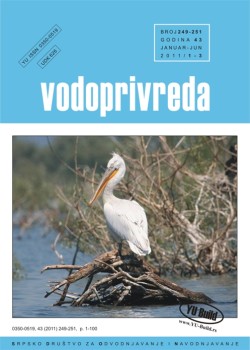Autori: Ognjen BONACCI, Ivo ANDRIĆ, Tanja ROJE-BONACCI
REZIME
The paper studies different increasing trends of characteristic (minimum, mean and maximum) annual temperatures measured at four meteorological stations in the Zagreb City area. The goal of the analysis is to determine the extent to which the warming trend observed in different part of the Zagreb City area is caused by their locations, i.e. by the urban heat island (UHI) effect. Data from the following four meteorological stations are used: (1) Zagreb Griĉ (ZG); (2) Zagreb Maksimir (ZM); (3) Zagreb airport (ZA); (4) Puntijarka (PU). The meteorological station ZG is located in the inner city centre, ZM in the suburb exposed to intensive urbanisation in the recent decades, ZA in the suburb exposed to low urbanisation, while the location of PU is near the top of the Medvednica Mountain, far from any influence of urbanisation. The time series of differences between the characteristic air temperatures for all pairs of meteorological stations are calculated during two periods: (1) 1949-2016; (2) 1981-2016. Regression and correlation methods, trend analyses of time series of characteristic air temperatures and their differences, t-test and Mann-Kendal test are used in this paper. The differences in characteristic air temperatures between all pairs of stations showed individual development of temperatures at nearby stations. The stations located in the city and the rapidly urbanised suburb are under a stronger influence of global warming (GW) and UHI effects than the station located in the suburb, less influenced by urbanisation. ZM experiences a higher influence of GW and UHI compared to ZG, and especially ZA and PU. UHI affects the increase in the ZM minimum air temperatures approximately 30% more than at ZG. The most significant increasing trend is observed in the time series of the minimum annual air temperatures. The increasing trend of characteristic air temperatures measured at PU is not influenced by the UHI effect.

